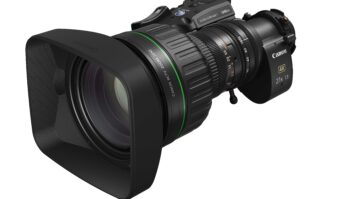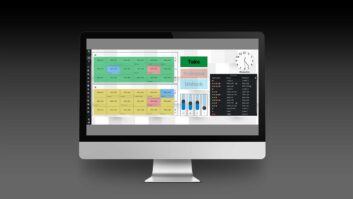How do you take a gaming experience, share it with a 10,000 attendee audience and another 20 million online viewers yet still make it feel personal? Esports is unique in that the majority of viewers are also players themselves and are accustomed to following many different points of view. They watch esports not only to follow a favourite team or connect with a community but also to pick up tips and tricks to improve their own gaming skills.
This makes them a demanding audience; fans are not shy about telling you what they like. When they play or watch another player at home, the live chat window is always open. Feedback about what they are watching is instantaneous. And the feedback isn’t just about what’s happening in the game or interacting with other viewers. In a live event, that feedback is also directed to the production team. Over the course of an event, the weight of audience comments can completely transform how the event is being produced.
How esports audiences want the story told is different from a traditional sports broadcast and the production team has to be responsive to this live audience interaction to keep viewers engaged. Each game has a way of viewing that is preferred by the majority of the audience. Quickly responding to these viewing preferences is key to production success. Even in esports events that have a traditional sport analogue, such as EA Sports FIFA or Madden NFL, audience numbers can fall off if a game is produced following the patterns of a traditional football broadcast. And there is no barrier to exit for an esports viewer. It takes a lot less effort for a fan to click to another stream than it does to leave the seat and walk to the parking lot.
To enable the flexibility that is needed for esports productions, production companies have begun to adopt traditional live broadcast equipment. This gear is designed to tell stories in a live environment while maintaining high production quality and easily growing to meet expanding production requirements.
Like traditional sports, esports audiences are immensely loyal to their favourite game(s) – whether that’s PUBG, Fortnite or League of Legends – and as the games get bigger and better with each release, the fans demand more immersive viewing experiences and richer storytelling. As a result, the average live Overwatch or CS: GO production has become much larger and more complex than in the past. The lightning-paced gameplay and many potential storylines means fast response times are essential.
One size doesn’t fit all
Today’s esports production teams are made up of technical crew, replay operators and camera operators with skillsets that wouldn’t be out of place at an NFL game or Premier League match. Producers are also recruiting gaming enthusiasts with broadcast know-how or those from gaming backgrounds that are willing to learn new skills in the broadcast industry.
While broadcast skills are becoming increasingly important to esports productions, flexibility and a willingness to learn new skills are also important. Engaging audiences is all about telling a strong story and to do this, a knowledge of the game is critical. There is no such thing as a standard esports producer, it takes the right mix of enthusiasm and knowledge of the game and the skills needed to be fast and responsive in a live production environment.
Further complicating the production requirement is the fact that games like Overwatch, League of Legends and Fortnite are very dynamic; how the game is played can change from one season to the next as new versions are released. Producers tend to specialise in specific game formats, aligning tightly to gaming companies rather than building more generalised esports experience.
To keep up with the changing stories, today’s esports productions demand workflows that are highly adaptable— yet simple to use. While the set-up may look very much the same as a traditional live sports production environment, esports producers use their workflows very differently. Production tools must be accessible by observers in-game, by in-arena content production teams as well as the team working on the broadcast. Sharing resources – such as equipment – is central to a smooth production; different teams need fast and easy access to production switchers and control surfaces for different purposes.
Adapting to scale
As games grow in popularity, their global followings and tournaments become larger. Scalability is absolutely critical. Production environments must be able to handle the sheer size of events like The International, Dota 2 championship supporting feeds from various locations as well as the potentially hundreds of signals a major championship event generates. Workflows must support multi-platform acquisition and distribution, and the hours and hours of content that fans and players crave. Seven hours is not unheard of for a tournament final, compared to an average three hours and 45 minutes for an NFL game. Today’s professional broadcast equipment is built to handle rapid turnaround productions and large numbers of feeds, which also makes it ideal for esports events.
Adopting traditional broadcast gear and borrowing from sports broadcast workflows, which are designed to handle multiple feeds and large volumes of content, makes it easier to deliver strong storytelling that brings fans closer to the live gameplay action – both in the broadcast feed and via in-event content delivery.
A role for remote production
Similarly, existing features are being re-emphasised for their suitability in an esports context. Remote production is a good example of an established traditional broadcast approach being adapted to fit the needs of esports.
Esports has its origins in small local events held everywhere from Thailand to Germany, with each event using a different format. Equipment and graphics packages also vary from one production to another – depending on local availability. This has made standardisation a challenge in the past, however, thanks to remote production this is changing.
Having a centralised production studio allows esports content producers to standardise everything from formats to graphics as well as the look and feel of a production. Rather than sending production teams all over the world or hiring local operators, centralising production means the same team is at the helm every time, ensuring consistency across all the live events in a league. The larger esports teams are also following this pattern of centralised production to ensure their brand remains consistent and strong.
With a remote production approach, standardised fly-kits and cameras are deployed at individual events, along with a pared-down on-location crew. All of the source feeds then come into the main production facility – whether via IP or dedicated fibre links – including a consolidated production feed, different language versions and shout-casters. Feeds are then packaged and distributed to audiences around the globe via a range of platforms from social media to Twitch and YouTube.
As well as the obvious cost savings that remote production delivers across the hundreds of live events each year, centralising production in one of the key media hubs such as LA or London, ensures you have consistent access to the very best production teams and can deliver first-class content. Working regular shifts, as opposed to flying around the world from event to event, reduces the level of burnout, delivers better job satisfaction and improves wellbeing – all of which allows esports leagues to attract the very best talent in the industry.
Give and take
While esports sees huge benefits from adopting the workflows and equipment used by traditional sports, the relationship is far from one way. There’s little doubt that esports is the future of television and traditional sports have a huge amount to gain by taking on board some of the inherent approaches and features of your typical esports production.
Anything that esports does can be used in a traditional sports production context. The new generation of sports fans watch on different platforms, engage in different ways, and have a social presence. Having audience comment and feedback in real-time is part and parcel of live esports production, with producers responding in live time to what the audience wants. This is something we will see more of in other live production genres – especially premier sports – as the influence of the esports audience preferences trickles into the mainstream broadcast world. The interactive and mobile nature of esports is something that traditional sports producers can take valuable lessons from.
This is an exciting time to be involved in live production as long-held models begin to shift and evolve as the role of fans becomes even more important in shaping production values and approaches.







